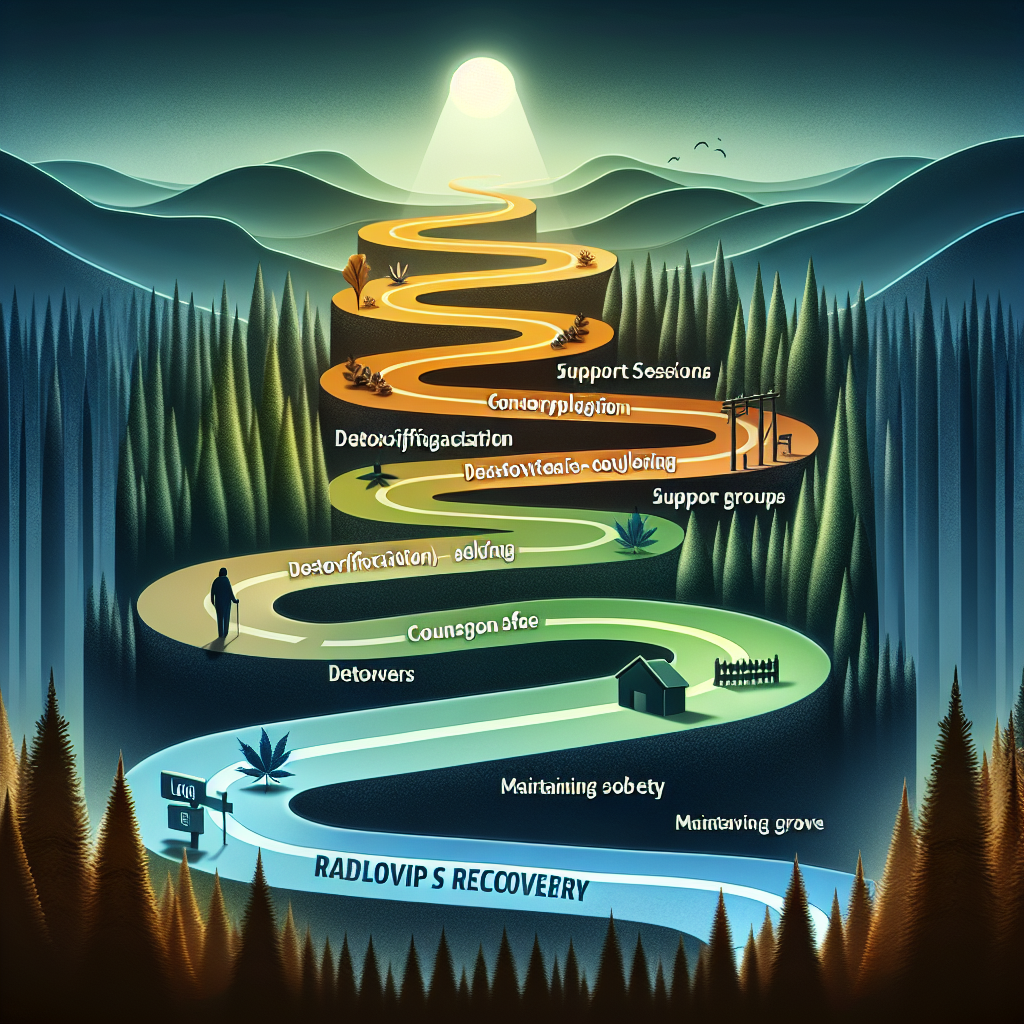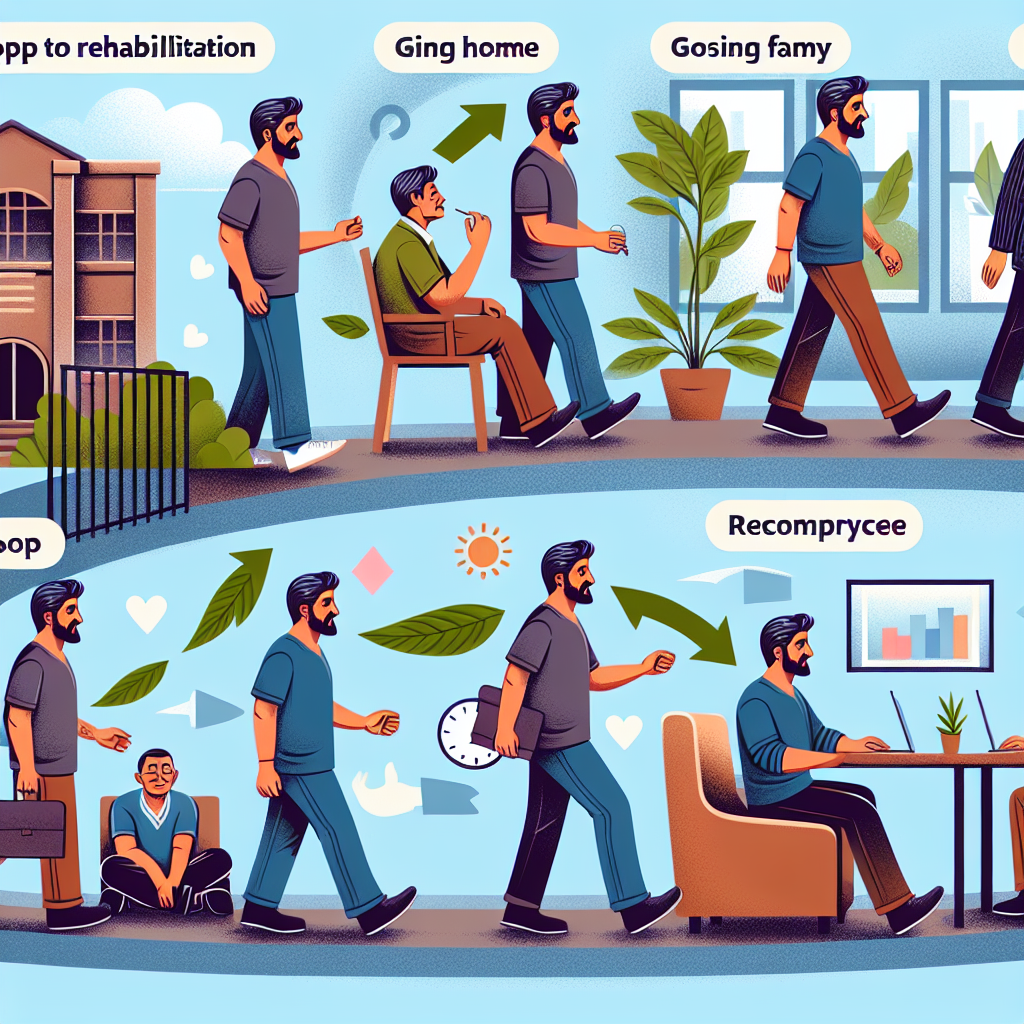-
Table of Contents
“Empower Your Future: Sustainable Strategies for Overcoming Fentanyl Addiction”
Introduction

Fentanyl addiction is a severe and life-threatening condition that requires a comprehensive and multifaceted approach for long-term recovery. Strategies for overcoming this addiction involve a combination of medical, psychological, and social interventions designed to address the complex nature of substance use disorders. Key components include medically supervised detoxification to manage withdrawal symptoms, medication-assisted treatment (MAT) to reduce cravings and prevent relapse, and behavioral therapies to address underlying psychological issues and develop coping mechanisms. Additionally, support systems such as peer support groups, family therapy, and community resources play a crucial role in providing ongoing encouragement and accountability. By integrating these strategies, individuals can work towards sustainable recovery and reclaim their lives from the grip of fentanyl addiction.
Building a Strong Support Network
Building a strong support network is a crucial strategy for long-term recovery from fentanyl addiction. The journey to sobriety is often fraught with challenges, and having a reliable support system can make a significant difference in overcoming these obstacles. One of the first steps in establishing this network is to reach out to family and friends who are willing to offer their unwavering support. These individuals can provide emotional stability, encouragement, and a sense of belonging, which are essential components in the recovery process.
In addition to personal relationships, joining support groups can be incredibly beneficial. Groups such as Narcotics Anonymous (NA) offer a safe space for individuals to share their experiences and struggles with others who understand what they are going through. The sense of community and shared purpose found in these groups can be a powerful motivator for staying on the path to recovery. Moreover, hearing success stories from others who have overcome similar challenges can inspire hope and reinforce the belief that long-term recovery is achievable.
Professional support is another critical element in building a strong support network. Engaging with healthcare providers, such as therapists, counselors, and addiction specialists, can provide the necessary medical and psychological assistance required for recovery. These professionals can offer personalized treatment plans, coping strategies, and ongoing monitoring to ensure that individuals remain on track. Furthermore, they can help address any underlying mental health issues that may have contributed to the addiction, thereby promoting holistic healing.
Transitioning from professional support to community resources, it is important to recognize the value of local organizations and services dedicated to addiction recovery. Many communities offer resources such as sober living homes, outpatient treatment programs, and vocational training, which can aid in the reintegration process. These services not only provide practical assistance but also foster a sense of accountability and structure, which are vital for maintaining sobriety.
While external support is indispensable, it is equally important for individuals to cultivate self-reliance and resilience. Developing healthy coping mechanisms, such as mindfulness practices, exercise, and hobbies, can help manage stress and prevent relapse. Additionally, setting realistic goals and celebrating small victories along the way can boost self-esteem and reinforce the commitment to recovery.
Another key aspect of building a strong support network is open communication. Being honest about one’s struggles and progress with trusted individuals can alleviate feelings of isolation and shame. It also allows for timely intervention if signs of relapse appear. Encouraging open dialogue within the support network ensures that everyone is on the same page and working towards the common goal of sustained recovery.
Lastly, it is important to remember that building a strong support network is an ongoing process. Relationships and circumstances may change over time, and it is essential to remain adaptable and proactive in seeking new sources of support when needed. By continuously nurturing and expanding this network, individuals can create a solid foundation for long-term recovery from fentanyl addiction.
In conclusion, the journey to overcoming fentanyl addiction is undoubtedly challenging, but with a robust support network, it becomes significantly more manageable. By combining the support of family and friends, professional assistance, community resources, and personal resilience, individuals can navigate the path to sobriety with greater confidence and hope. The strength of a support network lies in its ability to provide unwavering encouragement, practical assistance, and a sense of belonging, all of which are indispensable for achieving long-term recovery.
Developing Healthy Coping Mechanisms
Developing healthy coping mechanisms is a cornerstone of long-term recovery from fentanyl addiction. The journey to sobriety is often fraught with challenges, but by adopting effective strategies, individuals can build a resilient foundation for a drug-free life. One of the first steps in this process is recognizing the importance of emotional regulation. Emotions can be overwhelming, especially during the early stages of recovery, and learning to manage them constructively is crucial. Techniques such as mindfulness meditation and deep-breathing exercises can help individuals stay grounded and present, reducing the urge to turn to substances for relief.
In addition to emotional regulation, establishing a strong support network is vital. Surrounding oneself with positive influences can make a significant difference in maintaining sobriety. This network can include family, friends, support groups, and therapists who understand the complexities of addiction and recovery. Engaging in regular therapy sessions, whether individual or group, provides a safe space to explore underlying issues and develop strategies for coping with triggers and stressors. Moreover, participating in support groups like Narcotics Anonymous offers a sense of community and shared experience, which can be incredibly empowering.
Another essential strategy is to develop a structured daily routine. Consistency and predictability can provide a sense of stability that is often lacking in the lives of those struggling with addiction. A well-organized schedule that includes time for work, exercise, hobbies, and relaxation can help individuals stay focused and productive. Exercise, in particular, has been shown to have numerous benefits for mental health, including reducing anxiety and depression, which are common co-occurring conditions in those with substance use disorders. Regular physical activity can also serve as a healthy outlet for stress and a way to build self-esteem.
Nutrition also plays a critical role in recovery. A balanced diet can help repair the body and mind, which may have been damaged by prolonged substance use. Consuming a variety of nutrient-rich foods can improve mood, energy levels, and overall well-being. It is also beneficial to stay hydrated and avoid excessive caffeine and sugar, which can lead to mood swings and cravings. Consulting with a nutritionist can provide personalized guidance and support in developing a healthy eating plan.
Furthermore, engaging in meaningful activities can provide a sense of purpose and fulfillment. Pursuing hobbies, volunteering, or even going back to school can help individuals rediscover passions and interests that may have been neglected during active addiction. These activities not only occupy time that might otherwise be spent thinking about drugs but also contribute to a sense of accomplishment and self-worth.
Lastly, it is important to practice self-compassion and patience. Recovery is not a linear process, and setbacks are a natural part of the journey. Instead of viewing relapses as failures, it is more constructive to see them as opportunities for learning and growth. By treating oneself with kindness and understanding, individuals can build resilience and continue moving forward, even in the face of adversity.
In conclusion, developing healthy coping mechanisms is essential for long-term recovery from fentanyl addiction. By focusing on emotional regulation, building a support network, establishing a structured routine, maintaining proper nutrition, engaging in meaningful activities, and practicing self-compassion, individuals can create a strong foundation for a fulfilling, drug-free life. The path to recovery may be challenging, but with the right strategies and support, it is entirely achievable.
Establishing a Routine and Setting Goals
Establishing a routine and setting goals are crucial strategies for long-term recovery from fentanyl addiction. The journey to recovery is often fraught with challenges, but creating a structured daily routine can provide a sense of stability and purpose. This structure helps individuals regain control over their lives, which is often lost during the throes of addiction. By setting clear, achievable goals, those in recovery can measure their progress and stay motivated.
One of the first steps in establishing a routine is to create a daily schedule that includes time for essential activities such as meals, exercise, work or school, and leisure. Consistency is key; waking up and going to bed at the same time each day can help regulate the body’s internal clock, which is often disrupted by substance abuse. Incorporating regular exercise into the routine is particularly beneficial, as physical activity releases endorphins, which can improve mood and reduce cravings.
In addition to physical health, mental well-being is paramount in the recovery process. Setting aside time for mindfulness practices such as meditation or yoga can help individuals manage stress and anxiety, which are common triggers for relapse. These practices encourage a focus on the present moment, reducing the tendency to dwell on past mistakes or future uncertainties. Furthermore, engaging in hobbies or activities that bring joy and fulfillment can provide a healthy distraction from cravings and negative thoughts.
Setting goals is another vital component of long-term recovery. Goals should be specific, measurable, achievable, relevant, and time-bound (SMART). For instance, a goal might be to attend a certain number of support group meetings each week or to complete a specific educational course within a set timeframe. Breaking down larger goals into smaller, manageable steps can make them less overwhelming and more attainable. Celebrating small victories along the way can boost self-esteem and reinforce the belief that recovery is possible.
Moreover, it is important to set both short-term and long-term goals. Short-term goals provide immediate focus and direction, while long-term goals offer a vision for the future. For example, a short-term goal might be to stay sober for one week, while a long-term goal could be to rebuild relationships with family members. Having a mix of both types of goals ensures that there is always something to strive for, keeping motivation levels high.
Support systems play a crucial role in both establishing a routine and setting goals. Surrounding oneself with positive influences, such as supportive family members, friends, or mentors, can provide encouragement and accountability. Support groups, whether in-person or online, offer a sense of community and shared experience, which can be incredibly comforting during difficult times. These groups often provide a platform for sharing goals and celebrating achievements, further reinforcing the importance of setting and working towards objectives.
In conclusion, establishing a routine and setting goals are fundamental strategies for achieving long-term recovery from fentanyl addiction. A structured daily schedule provides stability and a sense of control, while clear, achievable goals offer direction and motivation. By incorporating physical activity, mindfulness practices, and engaging in fulfilling activities, individuals can improve their overall well-being. Additionally, leveraging support systems can provide the necessary encouragement and accountability to stay on track. Through dedication and perseverance, it is possible to overcome addiction and build a fulfilling, sober life.
Utilizing Professional Treatment and Therapy
Utilizing professional treatment and therapy is a cornerstone in the journey toward long-term recovery from fentanyl addiction. This potent synthetic opioid, known for its high risk of dependency and overdose, requires a comprehensive and multifaceted approach to overcome. Engaging in professional treatment programs can provide the structured support and medical supervision necessary to navigate the complexities of withdrawal and recovery. These programs often begin with a medically supervised detoxification process, which is crucial for safely managing the acute physical symptoms of withdrawal. During this phase, healthcare professionals may administer medications to alleviate discomfort and reduce cravings, thereby stabilizing the individual and preparing them for the next steps in their recovery journey.
Following detoxification, therapy becomes an integral component of the recovery process. Cognitive-behavioral therapy (CBT) is particularly effective in addressing the psychological aspects of addiction. By helping individuals identify and modify negative thought patterns and behaviors, CBT empowers them to develop healthier coping mechanisms. This form of therapy also equips individuals with strategies to handle triggers and stressors that may lead to relapse. Additionally, motivational interviewing can be employed to enhance an individual’s intrinsic motivation to change, fostering a sense of empowerment and self-efficacy.
Group therapy offers another layer of support, providing a sense of community and shared experience. In these settings, individuals can connect with others who are facing similar challenges, reducing feelings of isolation and fostering mutual encouragement. The shared journey of recovery can be a powerful motivator, as participants witness each other’s progress and setbacks, learning valuable lessons along the way. Moreover, family therapy can play a pivotal role in the recovery process. Addiction often strains relationships, and involving family members in therapy can help repair and strengthen these bonds. By fostering open communication and understanding, family therapy can create a supportive home environment that is conducive to long-term recovery.
In addition to traditional therapy methods, holistic approaches can complement the recovery process. Practices such as mindfulness meditation, yoga, and art therapy can help individuals reconnect with themselves and find new ways to manage stress and emotions. These activities promote overall well-being and can serve as healthy outlets for expression and relaxation. Furthermore, integrating physical exercise into the recovery plan can have profound benefits. Regular physical activity not only improves physical health but also enhances mental well-being by releasing endorphins and reducing anxiety and depression.
Long-term recovery from fentanyl addiction also necessitates ongoing support and aftercare. Sober living homes provide a structured and supportive environment for individuals transitioning from intensive treatment to independent living. These residences offer a drug-free setting where individuals can continue to practice the skills they have learned in treatment while gradually reintegrating into society. Additionally, participating in support groups such as Narcotics Anonymous (NA) can provide continuous peer support and accountability. These groups offer a platform for individuals to share their experiences, challenges, and successes, fostering a sense of belonging and community.
Ultimately, the journey to long-term recovery from fentanyl addiction is a challenging but achievable goal. By utilizing professional treatment and therapy, individuals can build a strong foundation for recovery, develop effective coping strategies, and create a supportive network that will sustain them through the ups and downs of their journey. With determination, support, and the right resources, long-term recovery is not just a possibility but a reality waiting to be embraced.
Q&A
1. **Question:** What role does medication-assisted treatment (MAT) play in long-term recovery from fentanyl addiction?
**Answer:** Medication-assisted treatment (MAT) uses medications like methadone, buprenorphine, or naltrexone to reduce cravings and withdrawal symptoms, helping to stabilize individuals and support long-term recovery.
2. **Question:** How important is behavioral therapy in the recovery process from fentanyl addiction?
**Answer:** Behavioral therapy is crucial as it helps individuals modify their attitudes and behaviors related to drug use, enhances life skills to handle stressful circumstances and environmental cues, and can improve the effectiveness of medications.
3. **Question:** What is the significance of a strong support network in long-term recovery from fentanyl addiction?
**Answer:** A strong support network, including family, friends, and support groups, provides emotional support, accountability, and encouragement, which are essential for maintaining sobriety and preventing relapse.
4. **Question:** Why is it important to address co-occurring mental health disorders in the context of fentanyl addiction recovery?
**Answer:** Addressing co-occurring mental health disorders is important because untreated mental health issues can exacerbate addiction, increase the risk of relapse, and hinder the overall recovery process. Integrated treatment approaches that address both addiction and mental health are more effective.
Conclusion
Long-term recovery from fentanyl addiction requires a multifaceted approach that includes medical treatment, behavioral therapy, and social support. Medically-assisted treatments such as methadone, buprenorphine, and naltrexone can help manage withdrawal symptoms and reduce cravings. Behavioral therapies, including cognitive-behavioral therapy (CBT) and contingency management, address the psychological aspects of addiction and help develop coping strategies. Social support from family, friends, and support groups like Narcotics Anonymous provides emotional reinforcement and accountability. Additionally, addressing co-occurring mental health disorders and creating a stable, drug-free environment are crucial for sustained recovery. Comprehensive, individualized treatment plans that integrate these strategies offer the best chance for long-term success in overcoming fentanyl addiction.



